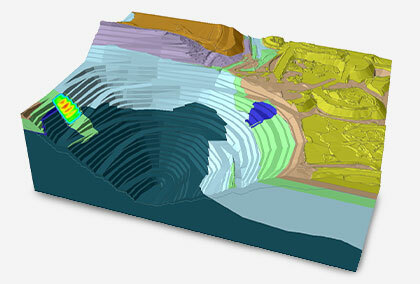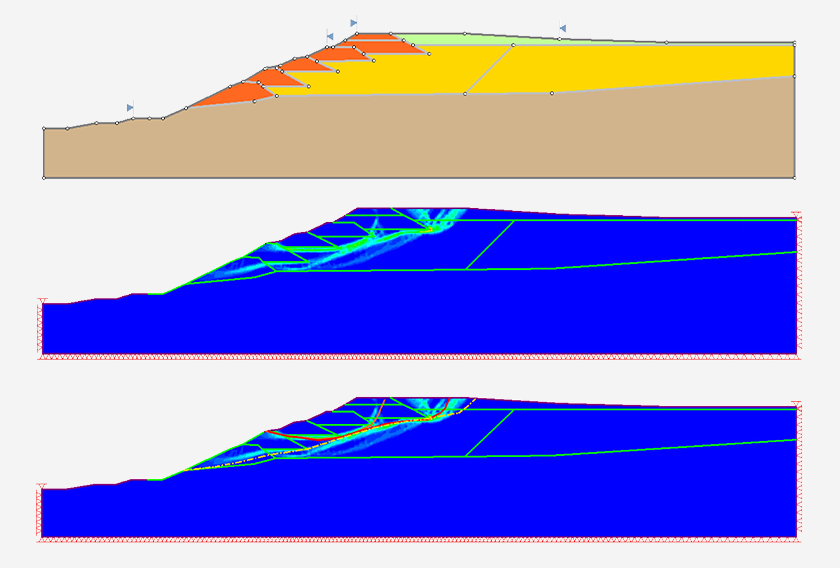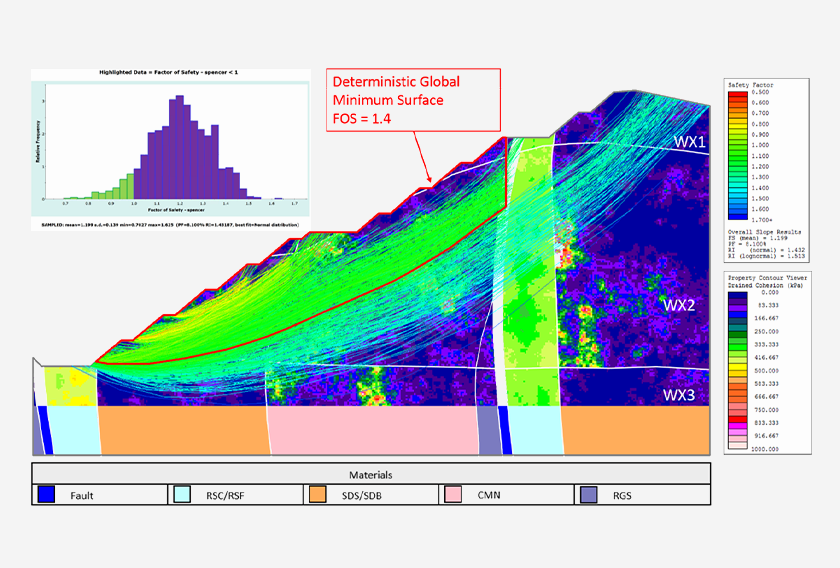Shear Strength Reduction Analysis – the Gift that Keeps Giving
- Dr. Reginald Hammah, Chief Scientific Officer
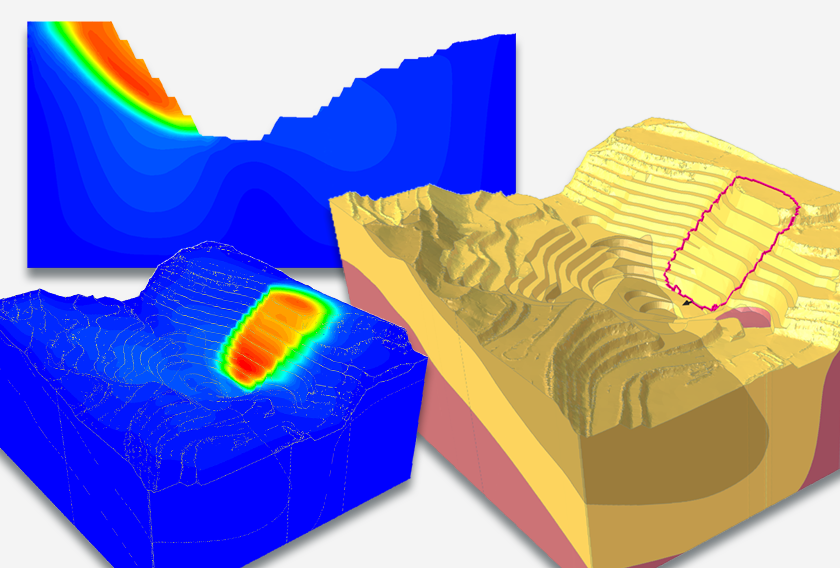
The "gift that keeps on giving" is a famous English phrase that implies a gift that gives enjoyment again and again. Per this definition, the Shear Strength Reduction (SSR) method of slope stability qualifies to be described as the gift that continues to bring joy to geotechnical engineers. It offers versatility, making it more than a worthy alternative to traditional limit equilibrium slope analysis.
This short article explores the power of the SSR method (implemented within a 3D finite element framework) on the analysis of a slope that includes a gently folded anisotropic material layer. The 3D example shows that, even without very fine meshing, the method can find safety factors lower than comparable limit equilibrium analyses for anisotropic behaviour.
A Little Bit of History
When commercial software tools that implemented the SSR method began to appear in the late 1990s and early 2000s, many geotechnical engineers were skeptical about its capabilities and usefulness. This attitude was not surprising and was probably very beneficial to the profession and the method.
After all, healthy skepticism is integral to scientific endeavours pounded into aspiring scientists and engineers in their education. It helps scientific and technical communities to minimize the risks of becoming complacent and casually accepting new ideas.
Such skepticism, practiced appropriately, forces careful innovation that respects the natural world and previous approaches. It turns to denialism – the rejection of evidence backed by sound experimenting and thinking – when taken to the extreme, on the other hand. (SSR analysis might have experienced some of that during those early years.)
Passing with Flying Colours
In our opinion, the SSR method has passed the “healthy skepticism” test with flying colours. It has proven a robust alternative to limit equilibrium slope stability analysis, and it is beneficial when stress-strain behaviour influences stability. Like limit-equilibrium methods, the SSR technique can accommodate multiple materials (of varying behaviours and properties) in slopes and a wide variety of groundwater conditions, among others.
Unlike limit equilibrium approaches, the SSR method can also provide insightful information on the development of failure mechanisms. It can consider strain softening and hardening material responses while not requiring a priori assumptions on failure shapes and modes.
The next section of the article will present the anisotropic example described earlier.
Example of Complex 3D Slope in Folded Anisotropic Material
The example involves an open pit excavated in conditions best captured with 3D slope modelling, as shown in the image below. One of the materials (the uppermost layer in the southern part of the pit) has closely spaced, gently folded bedding (weakness planes). In the 3D Rocscience programs, Slide3 (limit equilibrium program) and RS3 (finite element program with SSR analysis), the mechanical response of this material is best captured with the Generalized Anisotropic formulation. This anisotropic formulation captures the changes in anisotropy directions due to the folding.
We analyzed two cases of the slope with both Slide3 and RS3. We did this to allow a straightforward comparison of the performance of the two approaches. Each Slide3 model used 50 divisions along x- and y-directions and the Particle Swarm search technique for non-circular failure surfaces. The RS3 models, for relatively fast computations, used a rough discretization with 10-noded elements.
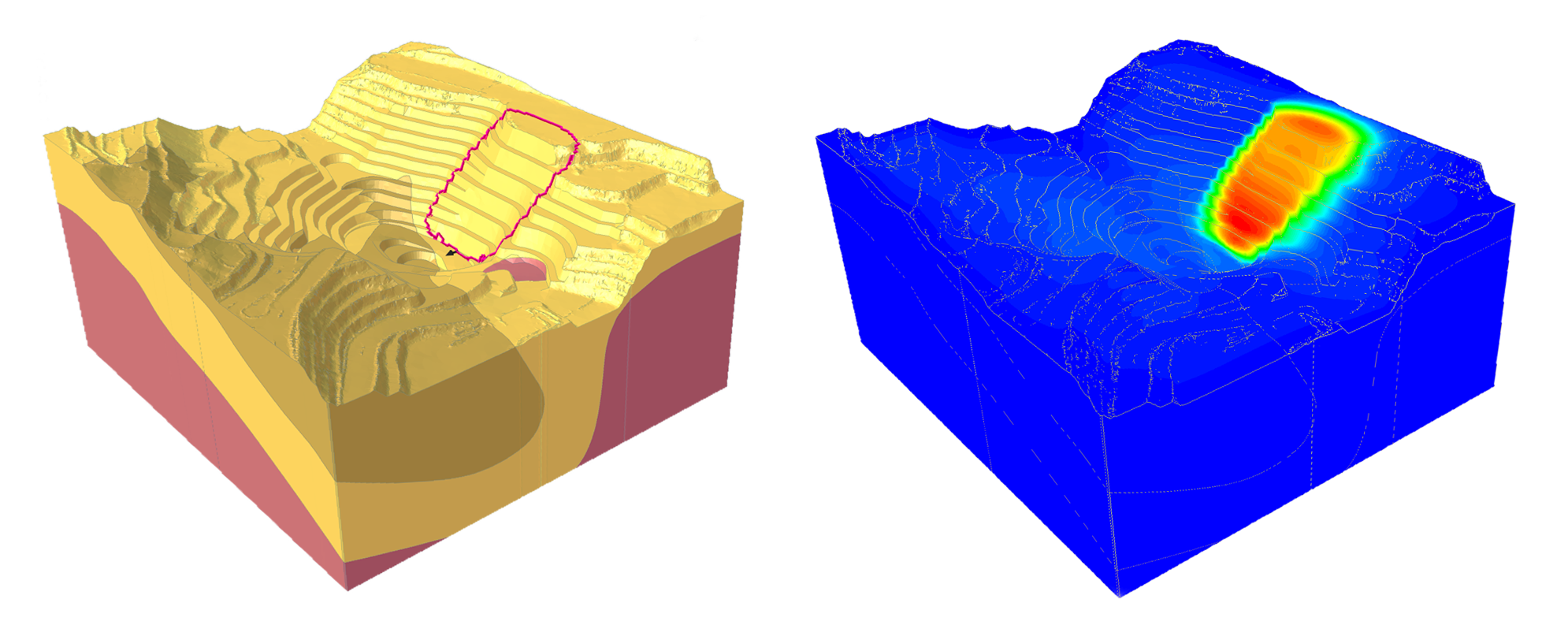

In the first case, we modelled the material of interest without anisotropy. Slide3 and RS3 produced similar safety factors (1.31 and 1.32, respectively). The second case assigned anisotropic behaviour to the material. The strength anisotropy was defined using the anisotropic surface option in both tools with A and B ranges equal to 5 degrees about the main orientation. Slide3 gave a safety factor of 1.22 and RS3 produced a slightly lower factor of safety of 1.16. Both methods captured the effects of strength anisotropy in the overall factor of safety and the failure mechanism. In all corresponding cases, the failure surfaces generated by both programs were very similar. In the case of anisotropy, a noticeable portion of the slip surface is aligned with the anisotropic surface.
Concluding Remarks
The experiment done for this article showed that the SSR method can successfully find 3D critical mechanisms and provide reliable factor of safeties even for complex cases involving anisotropic materials. The 3D finite element method with SSR hand-in-hand with the 3D limit equilibrium method can provide a reliable and comprehensive base for 3D slope stability analysis.
The SSR method continues to surprise with its capabilities. It is the gift that keeps giving. We encourage you to explore it more for yourselves.

